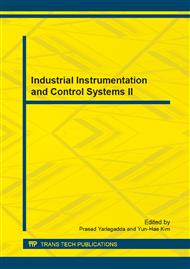p.1661
p.1665
p.1670
p.1676
p.1682
p.1688
p.1694
p.1699
p.1703
A Satellite Ephemeris Correction Calculating Algorithm Based on the Hill Differential Equation
Abstract:
The Hill differential equation is used to describe the change characteristic of the ephemeris prediction error in order to calculate the satellite broadcast ephemeris error and the error change rate. After the ECEF coordinate system converses the satellite inertial coordinate system, both the satellite ephemeris correction and the correction accuracy can be calculated by the Kalman filter. When the GEO, IGSO and MEO satellites move over the China, the calculation algorithms based on the weighted least square, the velocity model of the Kalman filter and the Hill differential equation are compared in the computing performance of the ephemeris corrections by using the reference date of IGS website. The simulation results show that: the ephemeris correction solver value based on the Hill differential equation can accurately reflect the ephemeris error characteristics at the current time. And it is able to correctly reflect the perturbation impact for the satellite ephemeris error. The Hill differential equation method is more suitable at the master station for engineering application about the MEO, IGSO and GEO satellites.
Info:
Periodical:
Pages:
1682-1687
Citation:
Online since:
July 2013
Authors:
Price:
Сopyright:
© 2013 Trans Tech Publications Ltd. All Rights Reserved
Share:
Citation:


